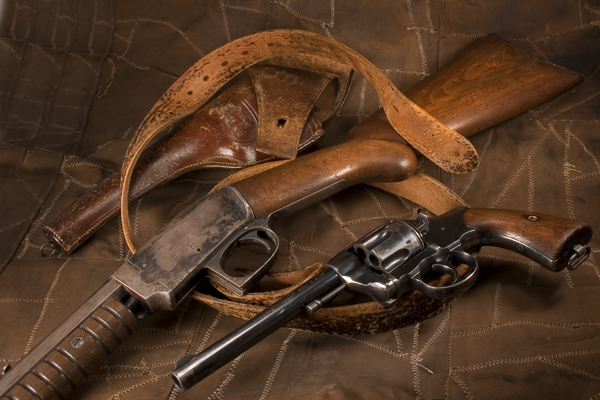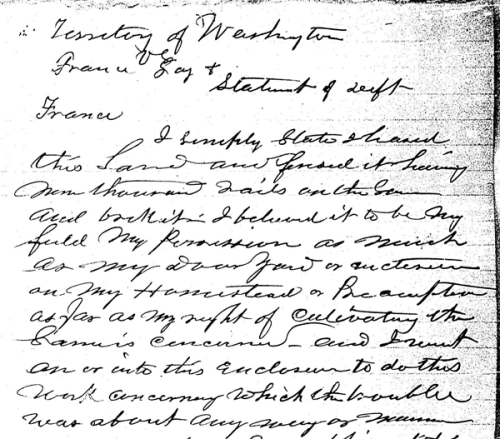You know how you sometimes start a project and with each step you take you discover three more steps you need to take? Such is the description of my quest for the story of George Washington France. My search for information about Seatco prison has turned into a search for the story of Mr. France, his life, his family, his accomplishments and his survival, creating a mushroom cloud of needed information.
I was able to obtain copies of the documents of his trial with the assistance of Colombia County Deputy Clerk, Jessica Attwood. These added names to the verbal picture Mr. France created in his book and gave insight into the actual homicide for which he was tried, and ultimately convicted. The year was 1879–everything was hand written–leaving me at the mercy of official penmanship. One thing I noticed about the documents; all the witness statements were written in the same hand, so obviously dictated. I found it perhaps telling that the statements of the witnesses for the prosecution seemed to be much more legible than those of the witness for the defence,
and especially Mr. France’s. Was the clerk just tired from taking all those statements, or was he just not particularly interested in what Mr. France had to say?
I am now working with the Garfield County Historical Society. I want to know where the France “settlement” was, who lived there, besides Archie Haven, (the man France killed), and the witnesses in the case. I know George was Married to Effie Mariah Cammack in 1871 and that they had four children, Clarence, Eva, Clyde and Ines, but I don’t know what became of them. I know that Effie divorced George, but I don’t know why and the date on the court documents is unreadable. How long did she stand by him? Was she able to keep the property? Where did the kids go?
I’ve learned that France leased property belonging to the Peola school from the government under a program that seems to have been on-again off-again and that this land led, in part, to his conflict with Archie Haven. Also that George’s land had the only water supply in the area and that someone named Ellis built a sawmill nearby, even though there was no water to run it. Comments made by George in a letter to Territorial Governor Eugene Semple seem to indicate that the owner of the mill and his henchmen purloined that water source, but the details are still out of my reach.
Another puzzle to be solved; the case started out with George France, Vasco De Lay and Bartlett Brooks as defendants but a short way into the court documents Mr. Brooks vanishes from that list, leaving only France and De Lay. None of the documents indicate what action was taken with Mr. Brooks or why he became reus non grata–the unwanted defendant.
This started out as a search for information about conditions in Seatco Prison in Bucoda. Despite his lengthy incarceration there, Mr. France is rather less prone to describing the day to day problems than I had hoped; yet there is enough there to tell a story.
So, no, I am not neglecting my blog, I’ve just been slowed down by the amount of information I need and the time it takes to get it and build the story. There is more to come on Bucoda and Seatco, on George ane Effie France and hopefully their children. And when I’m through with the France’s, there is the story of inmate Sarah Seibert, convicted of adultery and bigamy. So don’t go away, there’s some interesting stuff coming down the pike.
And don’t forget, you can see more of my photography at my Flickr acct.



